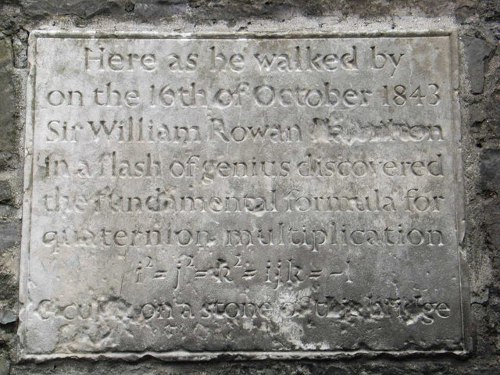James Watt perfects the steam engine, 1765:
I had gone to take a walk on a fine Sunday afternoon. I had entered the Green and had passed the old washing house. I was thinking up on the engine at the time and had got as far as the herd’s house, when the idea came into my mind that as steam was an elastic body it would rush into a vacuum, and that if a communication were made between the cylinder and an exhausted vessel it would rush into it and might there be condensed without cooling the cylinder. I had not walked farther than the golf house when the whole thing was arranged clearly in my mind.
Charles Darwin realizes why species diverge, 1840s:
I can remember the very spot in the road, whilst in my carriage, when to my joy the solution occurred to me; and this was long after I had come to Down. The solution, as I believe, is that the modified offspring of all dominant and increasing forms tend to become adapted to many and highly diversified places in the economy of nature.
Henri Poincaré discovers the relation between automorphic functions and non-Euclidean geometries, 1881:
Just at this time, I left Caen, where I was living, to go on a geologic excursion under the auspices of the School of Mines. The incidents of the travel made me forget my mathematical work. Having reached Coutances, we entered an omnibus to go some place or other. At the moment when I put my foot on the step, the idea came to me, without anything in my former thoughts seeming to have paved the way for it, that the transformations I had used to define the Fuchsian functions were identical with those of non-Euclidian geometry. I did not verify the idea; I should not have had time, as, upon taking my seat in the omnibus, I went on with a conversation already commenced, but I felt a perfect certainty. On my return to Caen, for conscience’ sake, I verified the result at my leisure.
Walter Cannon recognizes the fight-or-flight response, 1911:
As a matter of routine I have long trusted unconscious processes to serve me. … [One] example I may cite was the interpretation of the significance of bodily changes which occur in great emotional excitement, such as fear and rage. These changes — the more rapid pulse, the deeper breathing, the increase in sugar in the blood, the secretion from the adrenal glands — were very diverse and seemed unrelated. Then, one wakeful night, after a considerable collection of these changes had been disclosed, the idea flashed through my mind that they could be nicely integrated if conceived as bodily preparations for supreme effort in flight or in fighting.
William Rowan Hamilton conceives the fundamental formula for quaternions, 1843:
But on the 16th day of the same month — which happened to be a Monday, and a Council day of the Royal Irish Academy — I was walking in to attend and preside, and your mother was walking with me, along the Royal Canal, to which she had perhaps driven; and although she talked with me now and then, yet an under-current of thought was going on in my mind, which gave at last a result, whereof it is not too much to say that I felt at once the importance. An electric circuit seemed to close; and a spark flashed forth, the herald (as I foresaw, immediately) of many long years to come of definitely directed thought and work, by myself if spared, and at all events on the part of others, if I should even be allowed to live long enough distinctly to communicate the discovery.
Hamilton adds: “Nor could I resist the impulse — unphilosophical as it may have been — to cut with a knife on a stone of Brougham Bridge, as we passed it, the fundamental formula with the symbols, i, j, k; namely,
i2 = j2 = k2 = ijk = -1
which contains the Solution of the Problem, but of course, as an inscription, has long since mouldered away.” The bridge now bears a permanent plaque marking Hamilton’s achievement (below), and mathematicians undertake an annual walk from Dunsink Observatory to commemorate it.

